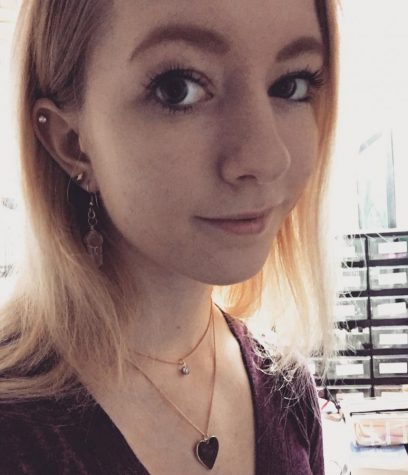‘Happy Death Day’ Proves to be Killer

October 16, 2017
Does anything come close to the teenage nostalgia that comes with October than slasher-comedy films? Rather, can fresh takes on this genre compete with the legacy of the originals that dominated the ‘80s and ‘90s? The movie Happy Death Day, directed by Christopher B. Landon, answers that question with a solid “yes”.
Groundhog Day meets the Scream franchise in this delightfully chilling mixture of mystery, thrills, and laughs. The story follows college student and sorority member Theresa “Tree” Gelbman through her normal routine, which goes as expected until she is stabbed to death by an assailant wearing an unsettling baby mask on the way to a surprise party her friends had planned for her birthday. After the fatal blow is delivered, she wakes up on the morning of her birthday the day before, and realizes with horror that she has become stuck in a time loop. The brutal murder repeats itself every night, no matter what great lengths Tree goes to in the hopes of preventing it. She resolves to get to the bottom of who is killing her and how to keep them from doing so.
Happy Death Day is hilarious and frightening in equal measure in a way that only films that don’t take themselves too seriously can be. Although pleasantly reminiscent of the low-budget movies it took inspiration from, it plays with the conventions and surprises its audience with clever twists all throughout. Just when you think the mystery has been solved or the time loop stopped in its tracks, the cycle begins again, leaving you just as lost for answers as the protagonist is. Elements from other genres are sprinkled in as well, adding themes of friendship, family, trust, and growth. The movie’s mystery is carried by Tree’s moral ambiguity. In the beginning, she falls into a stereotypical sorority sister archetype — she’s cruel to people unnecessarily, shallow, popular simply because of her good looks, attends wild parties, cheats with her roommate’s boyfriend, and is having an affair with one of her professors. When attempting to make a list of people who would have a motive to kill her, she realizes that it’s futile, because she hasn’t given anyone a good reason not to. The time loop provides not just Tree, but all other characters in the film with ample opportunities for development, and this is used to its fullest potential. The negative impressions of Tree’s classmates we see from her perspective in the beginning are destroyed as we are forced to understand more sides to them, just as Tree herself is. This change is orchestrated by the supporting cast’s stellar performances as they shift from nothing more than cardboard-cutout-esque archetypes to three-dimensional people we’ve all met in real life.
Both the setting and the cinematography aided the back and forth jumps between comedy and horror that made the film so uniquely enjoyable. The choice to have the murders take place in a sorority house (often stereotyped as breeding grounds for risky, peer pressure induced behaviors) exposed the audience to dormant fears hiding behind a setting typically associated with comedies and teen-oriented dramas. This allowed the pleasantly, surprisingly non-gory attacks to be alarming despite the lack of blood and jumpscares. It held the suspense all throughout the movie, as the audience had no warning of when the assaults were going to happen.
Happy Death Day lived up to the hype as a satisfyingly sweet October scare. Its PG-13 rating keeps it light enough for audience members with faint hearts to stomach, while its constant thrills keep it exciting enough for avid horror lovers.


